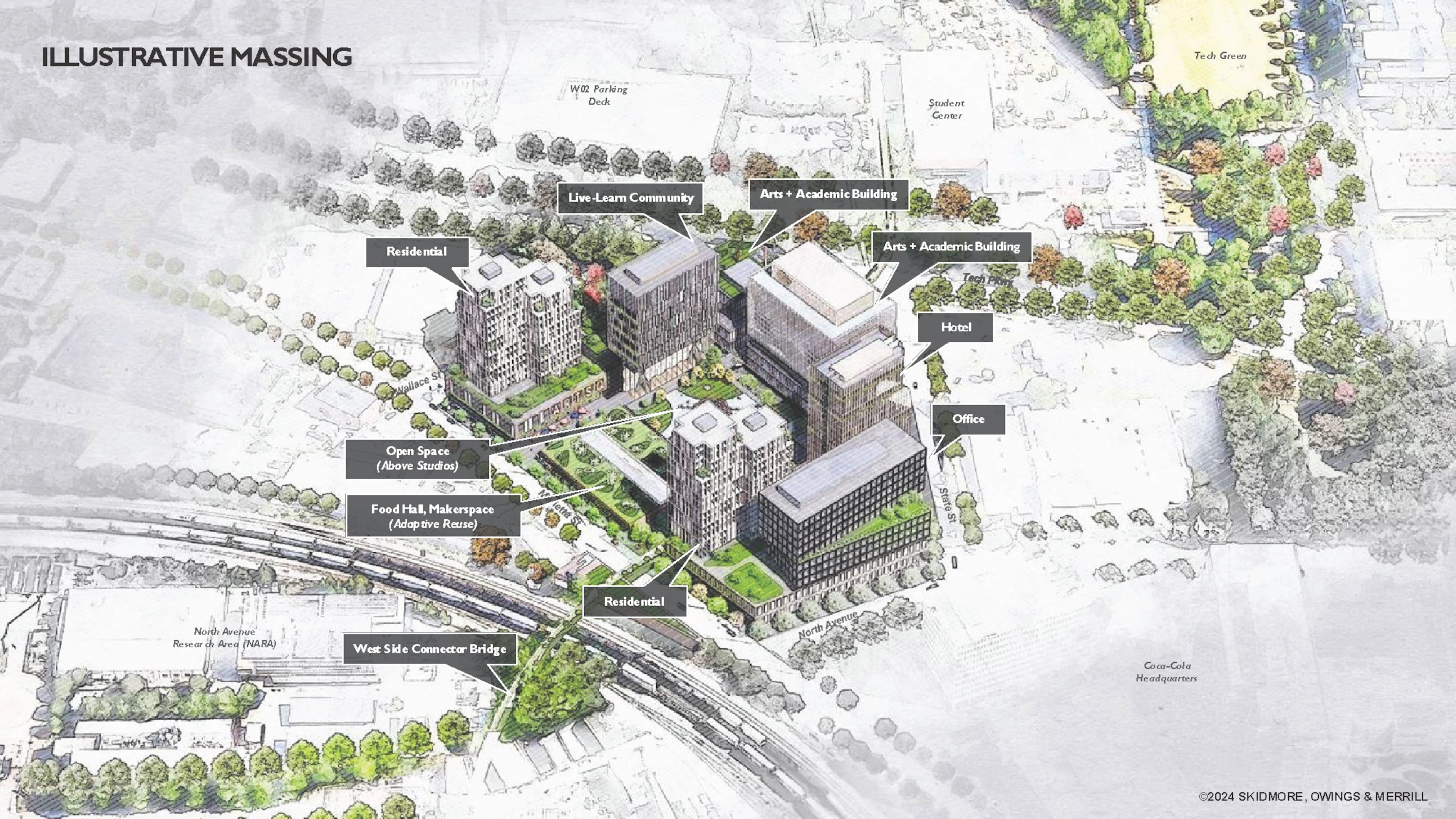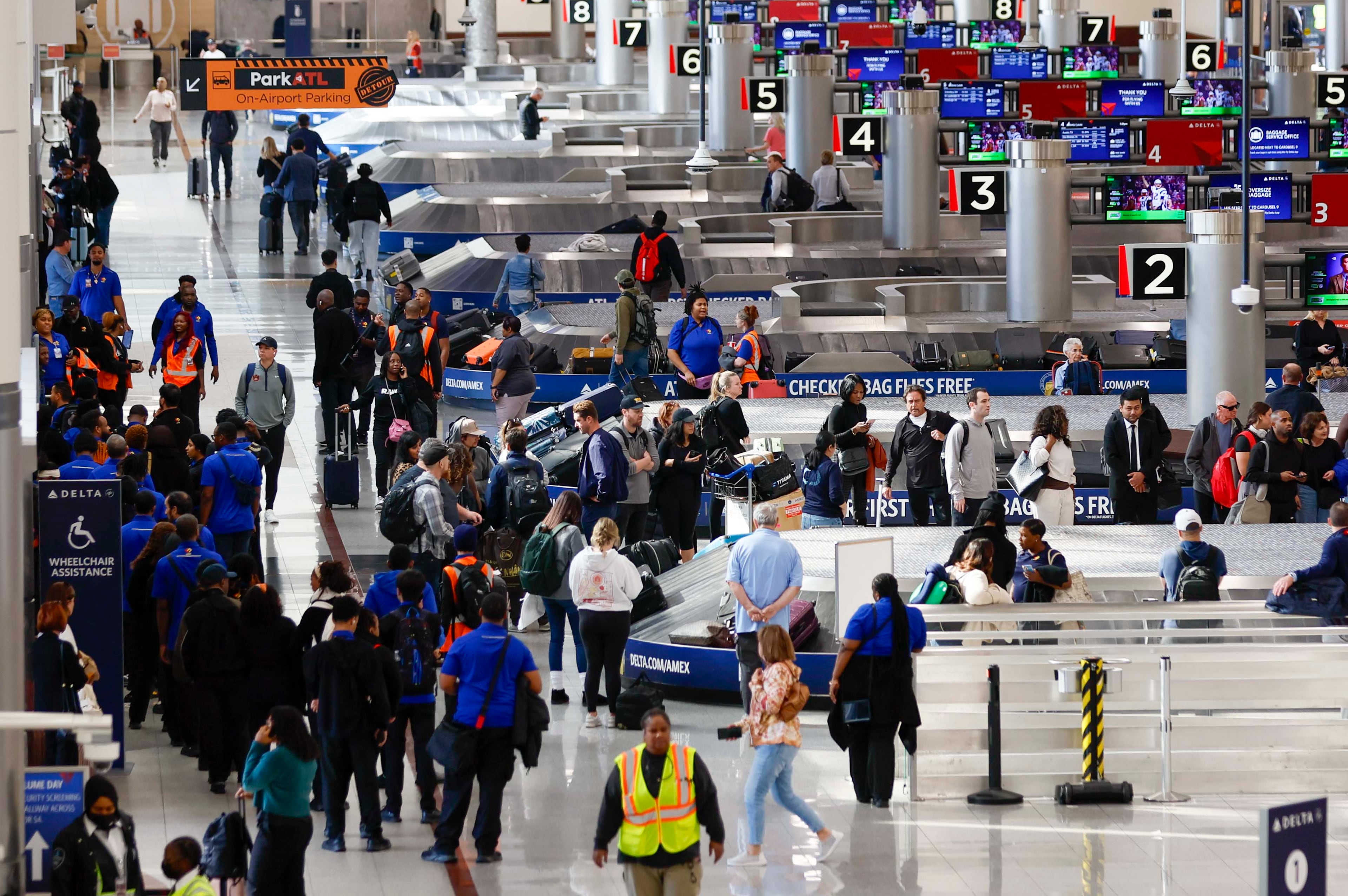Georgia Tech’s next innovation district more ‘creative’ than first two

After launching innovation districts for life sciences and technology, Georgia Tech is turning its focus to the state’s creative industries.
The university has announced plans to transform 8 acres of space along North Avenue and Marietta Street into what it calls “Creative Quarter,” a hub where new technologies for producing art are developed, shared and experimented with, according to a news release from the university.
Details of what exactly the first phase of development will entail were not disclosed, but it could include academic and office space, residential and commercial areas, performance halls, soundstages and production studios, according to the release.
The university, which is distinguished for its programs in science, technology, engineering and math-related fields, is not necessarily synonymous with the city’s creative industries. Jason Freeman, Georgia Tech’s associate vice provost for the arts, said Creative Quarter is trying to change that.
“We feel like there’s an unmet potential here, in an intersection between all of the strengths Tech has and where we see arts and creative industries headed in globally and throughout the state,” Freeman said in an interview with The Atlanta Journal-Constitution.
What Creative Quarter does for those students, Freeman said, is create spaces where they can learn how to use the latest technologies used in creative industries, gain skills in their practice and forge relationships that could lead to startup companies and successful careers as artists engaging in technology and technologists engaging in arts. But the innovation district’s resources won’t just be reserved for students — they’ll be accessible to the broader community, too.
Georgia Tech has developed two innovation districts in the past two decades: Tech Square and Science Square, both of which have become catalysts for investment in Midtown.
Spanning about 8 acres, Tech Square is home to more than 100 startups, five startup accelerators and several investor offices and innovation centers, from Cargill to homegrown global giants Delta Air Lines and Home Depot.
Science Square, an 18-acre multiphase development focusing on bioscience startups and life science innovation, is the newest of the two. Earlier this year, Duracell announced it would open a global research and development headquarters in the district.
Tackling the creative industries is an unlikely step forward for Georgia Tech, but art and technology are not siloed, particularly in a major market like Atlanta. All types of artists — from sketch and hyperrealists to filmmakers and producers — use specialized software to augment or enhance their workflows. This includes hardware, too: drones, motion-capture suits, drawing tablets, lighting kits, virtual reality headsets — the list goes on.
Plus, the 800-pound-gorilla in discussions about the natural evolution of art itself is the power of artificial intelligence — if, when and how it can be harnessed as a tool or manipulated to replace human jobs.
“Our students at Georgia Tech are hungry for experiences in the arts,” Freeman said. “No matter what their major is, the arts are important to a huge percentage of our students. Many of them are really interested in pursuing careers at this intersection of creativity and technology.”
The Creative Quarter site is the former headquarters of building products manufacturer Randall Brothers, which is close to the larger campus and other arts organizations in West Midtown. The university’s foundation in 2018 paid $36 million for the property, which also includes a 1940s warehouse that Tech plans to rehab. For as long as the site has been under the control of the foundation, it has been designated for building the innovation district, Freeman said.
Freeman couldn’t discuss concrete plans for the site, but he said it will be in the same vein as its other innovation districts. The vision for both Tech and Science Square included academic space and externally facing commercial components like offices, retail and housing. For the districts to be vibrant, they also need spaces that work all year and not just in the cycle of the academic year, he said.
Like the other innovation districts, Georgia Tech will build Creative Quarter in a phased approach.
“On a site like this, our ambition is not to build to the scale of many of the tremendous facilities in the state,” Freeman said. “We can build living laboratories to take these technologies further forward, in tech like audio, visual recording and virtual production.”


